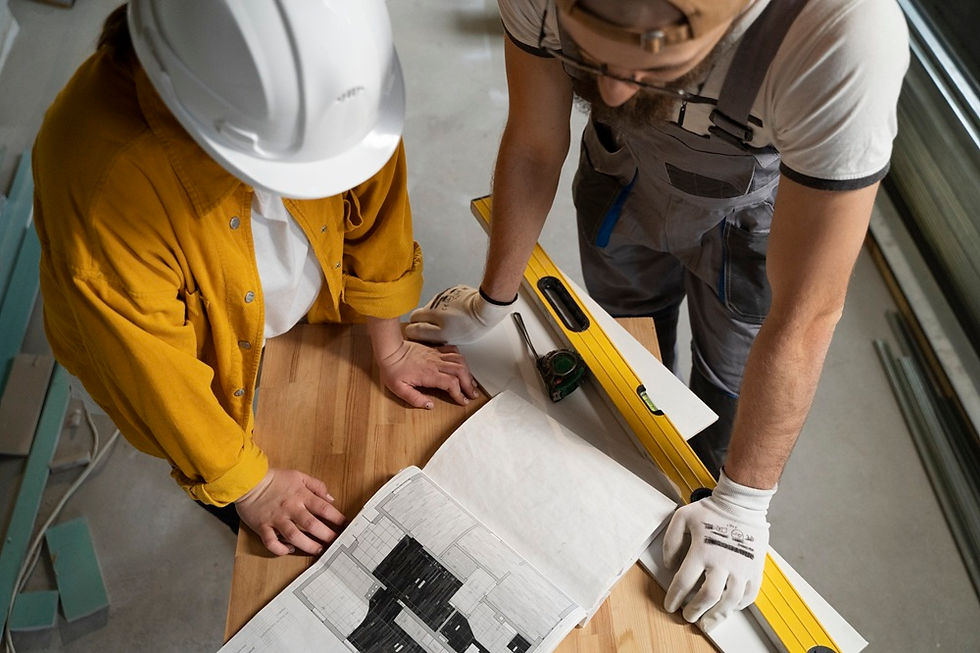How to Design and Build Your Dream Shipping Container Houses?
- Daisy Andrew
- Oct 12, 2023
- 3 min read
Updated: Oct 31
Do you find yourself drawn to unique, innovative, and eco-friendly housing options? Are you intrigued by the idea of constructing a home that breaks the norms of traditional architecture? If your answer is ""yes"", then you are exactly where you need to be. Today, we're treading off the beaten path into the avant-garde world of shipping container houses.
Shipping container houses, is the trend that pushed architecture into a new frontier, merging aesthetics with sustainability. It's an idea that's unconventional, that's for sure, but it's one that's increasingly catching the fancy of home builders and design enthusiasts worldwide. So why not join the trend? The concept might be a tad bit daunting but worry not, we have you covered.
In the following lines, we'll walk you through the journey of designing and building your dream shipping container house. We will explore its benefits, challenges, and legalities as well as pillar design principles to always keep in mind. Sit tight and enjoy this spectacularly mind-bending adventure.

Why Choose a Shipping Container House?
Shipping Container house are becoming a global rage, and it's not hard to fathom why. They pose a fascinating blend of visual appeal, affordability, and environmental sustainability. Across the world, approximately 24 million unused shipping containers are just wasting away. Reusing these containers as building blocks for homes is an excellent way to recycle and reduce waste. Plus, these steel boxes are incredibly sturdy and can withstand harsh weather conditions.
However, choosing to build a shipping container houses isn't just about being trendy or eco-conscious. It's also about the possibility of creating something unique, custom, and personal – catering to all your housing needs and quirks.
Legalities and Planning Permission:
Building a shipping container houses might involve many hoops and legalities. Imaginatively, it’s like playing a real-life Tetris game; only instead of moving blocks, you are playing with municipal codes, zoning laws, and building regulations.
Plan ahead – check with your local authorities about their rules concerning shipping container houses. You may find that some areas are more welcoming to this type of construction than others. Also, consider hiring a professional to help navigate through the bureaucratic red tape.
Building a Strong Foundation:
Every great structure starts with a solid foundation and the same holds when building a shipping container houses. Concrete slab, pier, and pile or strip foundations are the most popular choices.
Designing Your Dream Home:
This is where the real fun begins - the design stage. Dream, sketch, refine, and repeat, until you have a plan that you're in love with. An architect or an industrial designer can help bring your dream to life.
Insulation and Climate Control:
Insulation plays a crucial role to keep your shipping container houses comfortable across all seasons. Closed-cell foam is a popular choice for these homes, combining insulation and moisture control.

Finishing Touches:
Once your shipping container houses is fully insulated and interior walls are up, it's time to add those final finishing touches that transform a house into a home. From choosing color palettes to selecting fixtures, this final step can solidify the vision you had for your dream home.
Embrace the Adventure:
Designing and building a shipping container houses is less a project and more an adventure. Mistakes will be made, delays will happen, but the learning and satisfaction gained from building your own home will be unparalleled.
CONCLUSION
Embarking on the journey of designing and building a shipping container houses can be daunting yet exhilarating. There are ample reasons to pursue this path. The clear-cut favourite being the prospect of breathing new life into discarded shipping containers. And while the journey may occasionally be arduous, with unexpected turns and complexities, the end result is deeply rewarding — a home that truly stands apart. A home wherein every nook reflects you, not because it just houses your belongings, but because you've built it from the ground up. So, isn't it worth exploring, planning, and taking the plunge?




Comments